Abstract
Typhoid fever continues to escape swift diagnosis, even in an endemic country, and its multi-system nature led to delayed diagnosis in 25% of the patients in this study. This may have been an avoidable factor, leading to death in some patients through delay in instituting appropriate antimicrobial therapy. Neurological features and diarrhoea were particularly common in this paediatric population. Relative bradycardia has been shown to be a highly statistically significant finding for our group as a whole. Amoxycillin remains an effective and useful alternative to chloramphenicol. The mortality rate of 2.5% remains unchanged over the last 10 years. The relative inaccessibility to good primary health care, acceptable water supplies and sanitation that the black South African child encounters cannot be ruled out as a co-factor.
Full text
PDF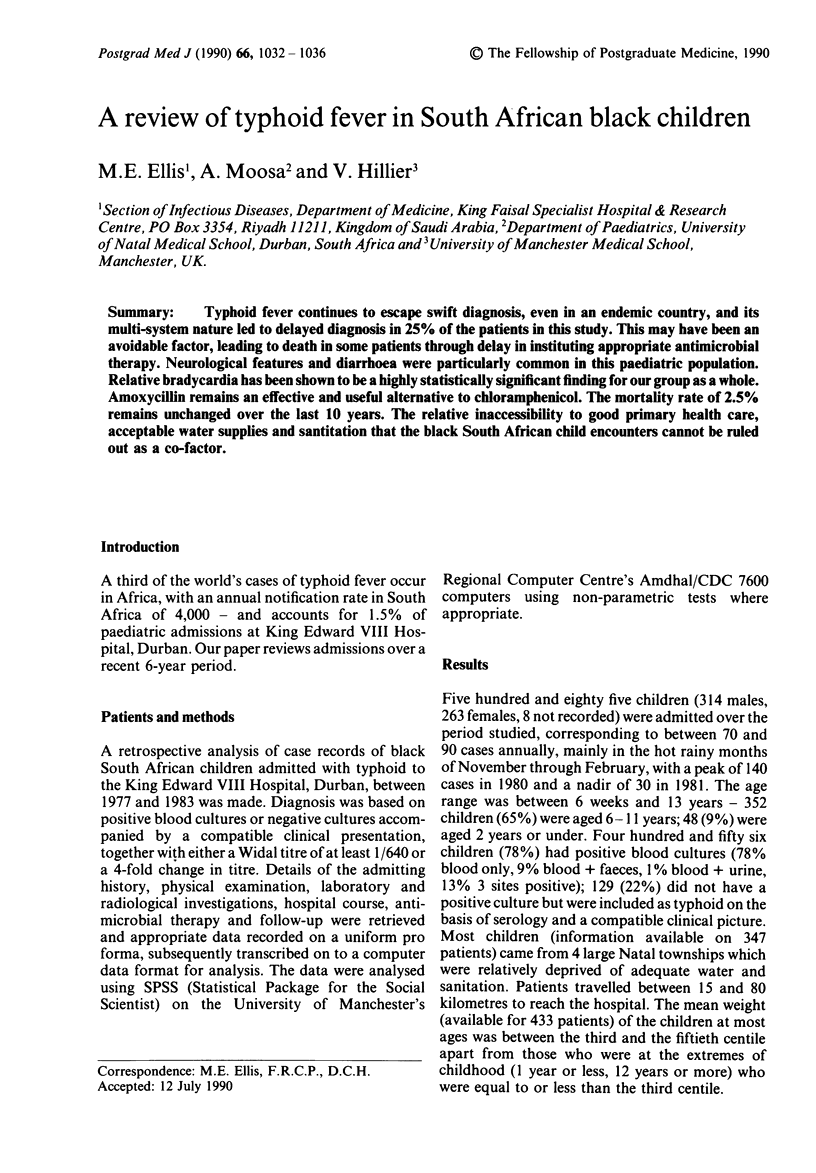
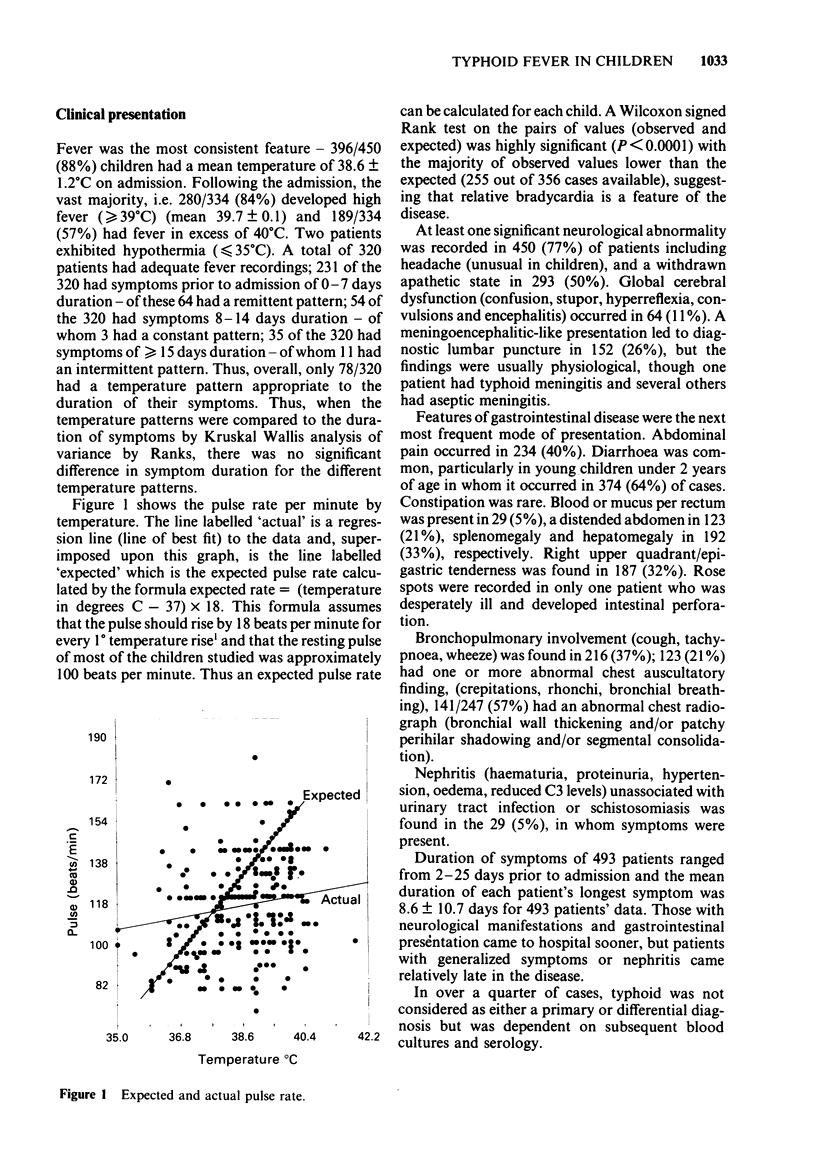
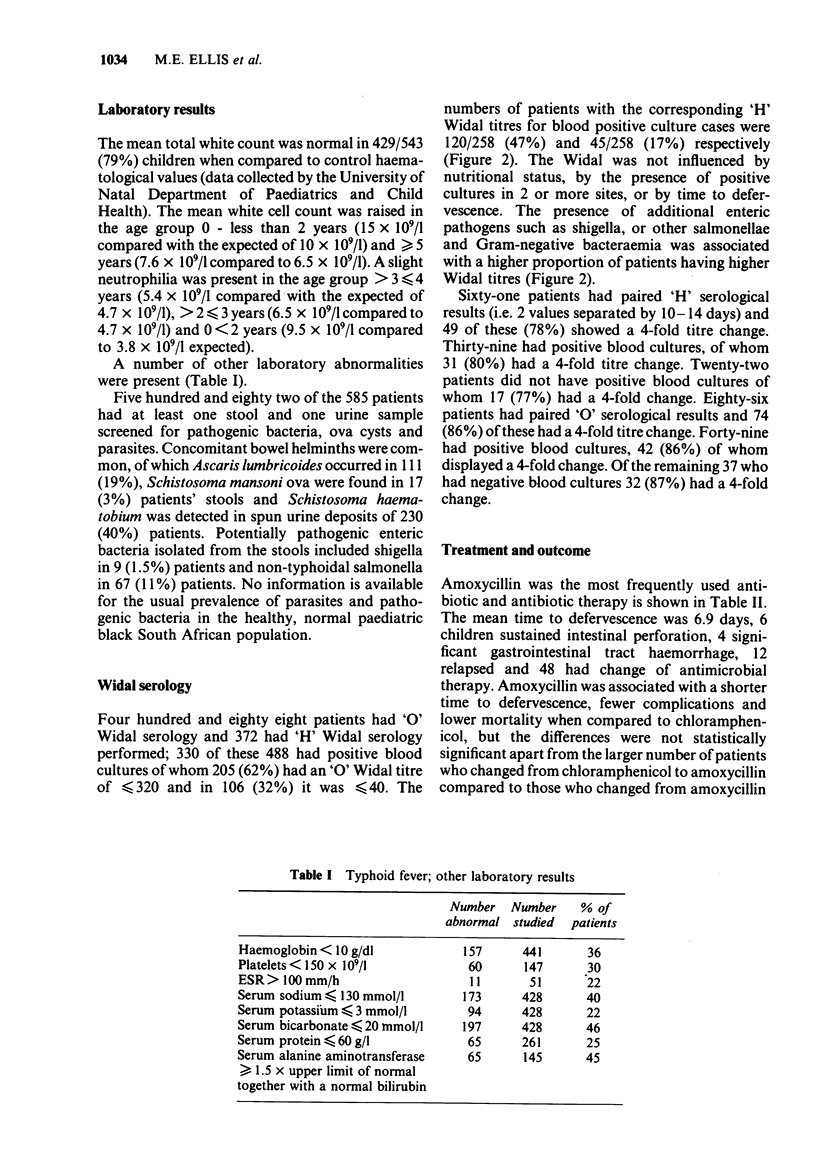
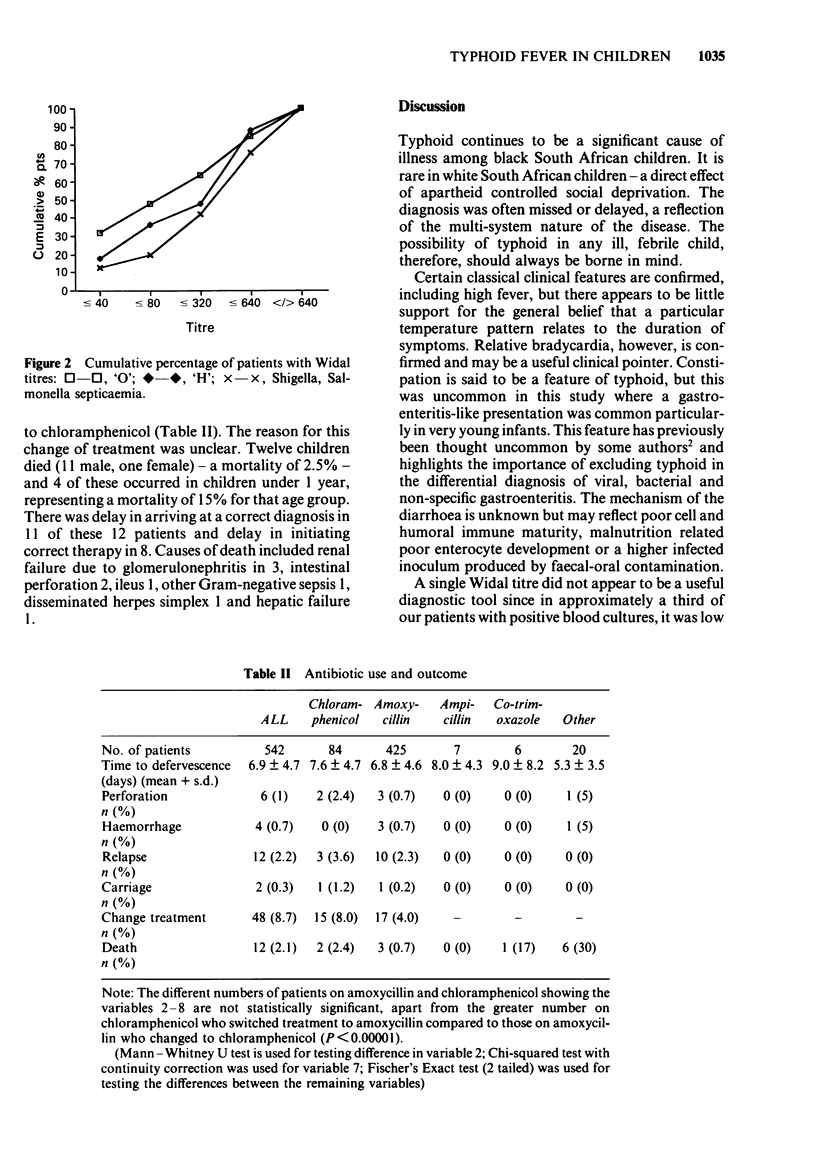
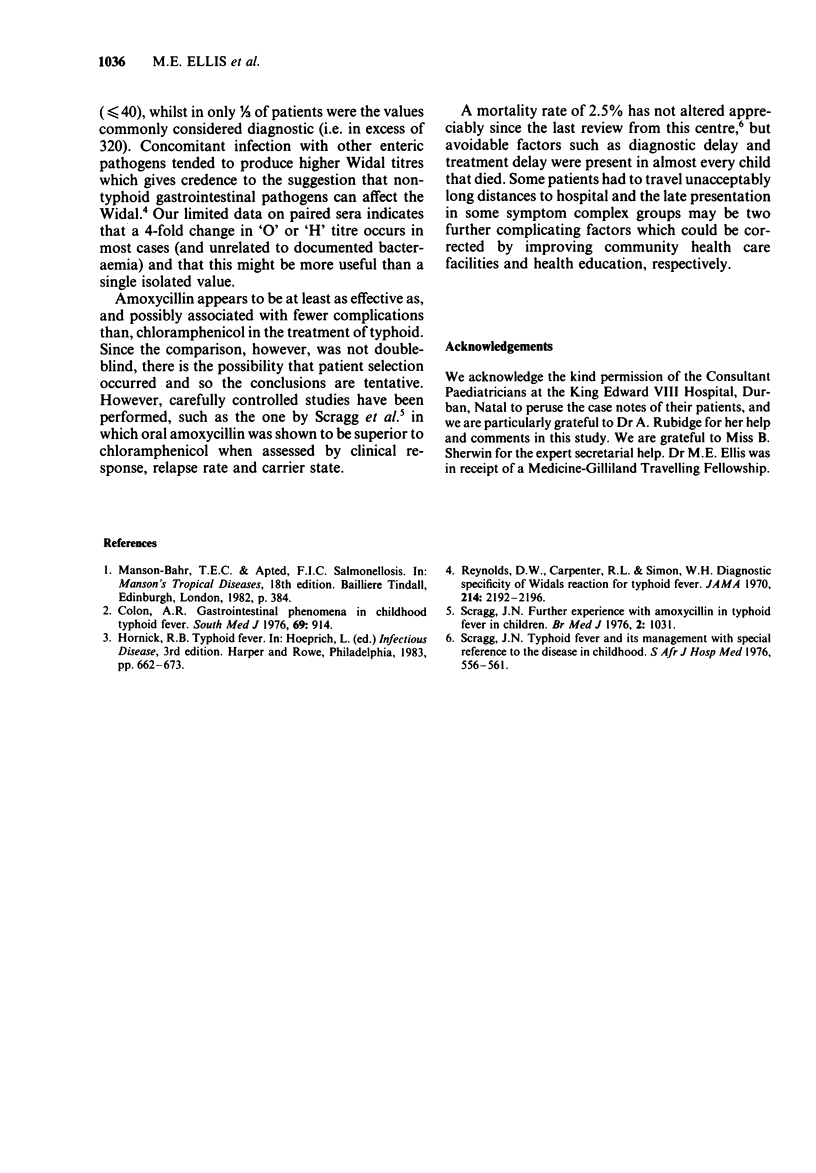
Selected References
These references are in PubMed. This may not be the complete list of references from this article.
- Colon A. R. Gastrointestinal phenomena in childhood typhoid fever. South Med J. 1976 Jul;69(7):914–914. doi: 10.1097/00007611-197607000-00037. [DOI] [PubMed] [Google Scholar]
- Reynolds D. W., Carpenter R. L., Simon W. H. Diagnostic specificity of Widal's reaction for typhoid fever. JAMA. 1970 Dec 21;214(12):2192–2193. [PubMed] [Google Scholar]
- Scragg J. N. Further experience with amoxycillin in typhoid fever in children. Br Med J. 1976 Oct 30;2(6043):1031–1033. doi: 10.1136/bmj.2.6043.1031. [DOI] [PMC free article] [PubMed] [Google Scholar]


